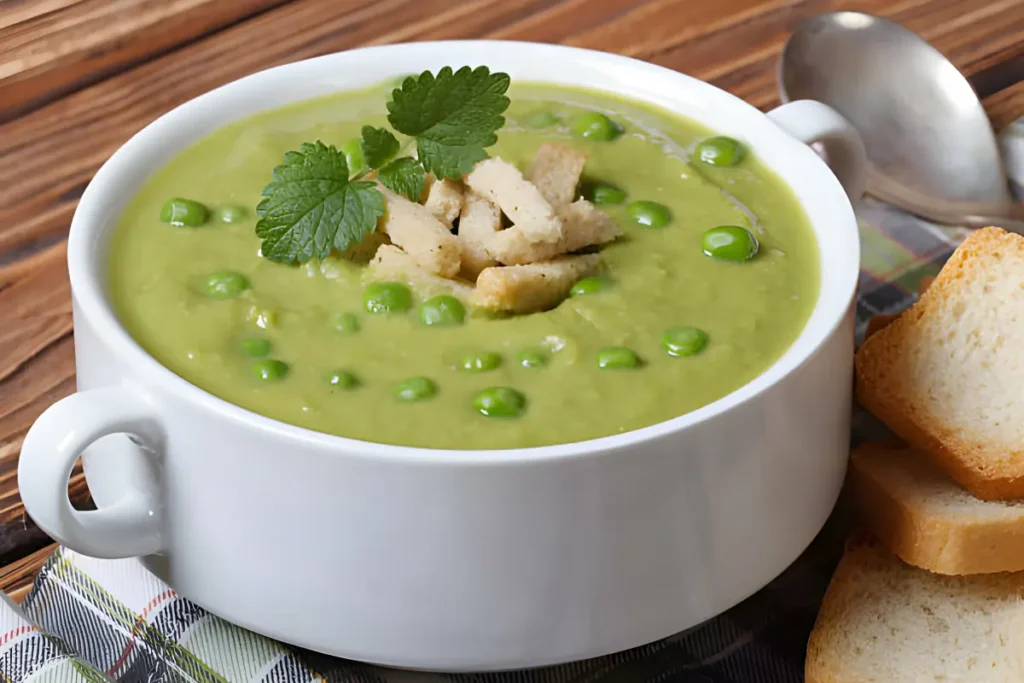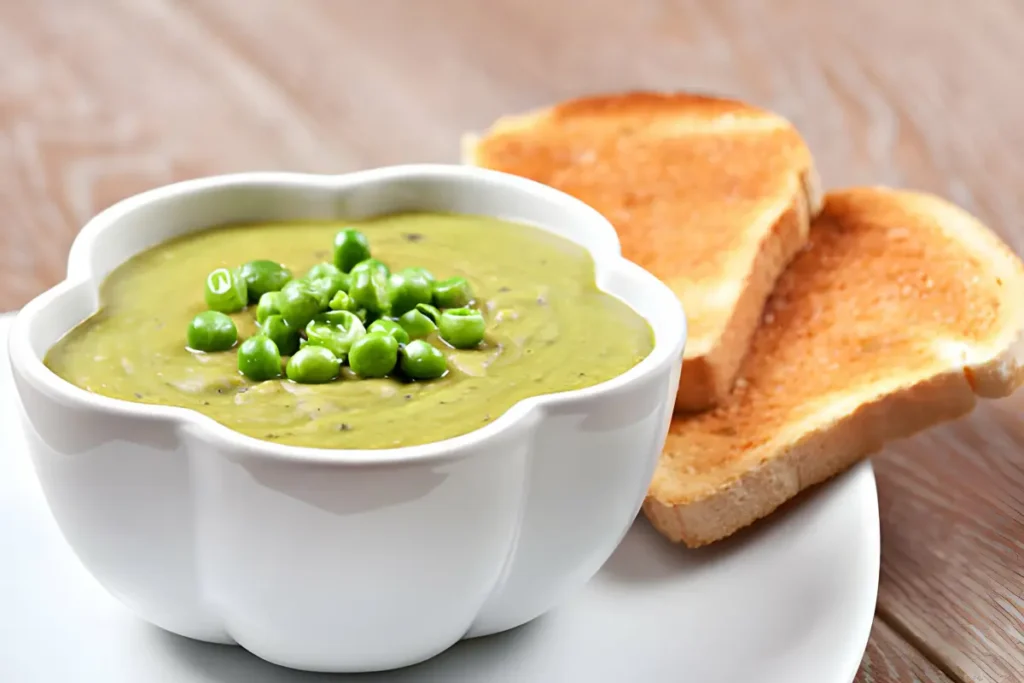Green pea soup, a dish as humble in its ingredients as it is rich in history and flavor, stands as a testament to the culinary creativity that can transform simple produce into a masterpiece of taste and nutrition. This guide takes you through the journey of creating the perfect bowl of green pea soup, from selecting the freshest peas to mastering the art of seasoning. Whether you’re a seasoned chef or a curious novice in the kitchen, this article promises to equip you with all you need to know to make your green pea soup a deliciously green centerpiece at any meal. Let’s dive into the verdant world of this classic soup, exploring its variations, preparation techniques, and the myriad ways to serve and enjoy it.
Introduction to Green Pea Soup
Green pea soup, a dish celebrated for its simplicity and depth of flavor, has graced tables around the world in various forms. From the thick, hearty versions enjoyed in the cold winters of Northern Europe to the lighter, brothy adaptations found in warmer climates, green pea soup has proven itself to be a versatile and universally loved dish.
Overview of Green Pea Soup
The history of green pea soup is as rich as its flavor. Originating from a time when cooking was about making the most of what was available, this soup turned a humble vegetable into a dish that could sustain families through hard times and please their palates with good ones. Today, it remains a favorite for its nutritional value, comforting warmth, and the ease with which it can be prepared.
Green peas, the star of the show, are not just a source of sweetness and color; they’re packed with vitamins, minerals, and fiber, making the soup not only a delight to the taste buds but also a boon to health. The versatility of green pea soup allows it to be enjoyed in its simplest form or dressed up with an array of spices, herbs, and accompaniments.
Whether you’re seeking comfort in a bowl during the chilly months or a refreshing and light meal option for the summer, green pea soup offers a delightful solution. With each spoonful, it brings a burst of flavor and a host of health benefits, making it a dish worth mastering in your culinary repertoire. So, let’s begin our journey into the world of green pea soup, exploring the best practices for selecting ingredients, mastering the cooking process, and uncovering the secrets to making your green pea soup a memorable meal.
Ingredients and Variations
Essential Ingredients for Green Pea Soup
The charm of green pea soup lies in its simplicity and the symphony of flavors brought together by its few, yet crucial, ingredients. At its core, this soup combines green peas, broth, and a selection of herbs and spices to create a comforting bowl of goodness.
- Green Peas: The hero ingredient, green peas, can significantly affect the soup’s taste and texture. While fresh peas offer a sweet and vibrant flavor, particularly in spring, frozen peas are a fantastic alternative, offering year-round accessibility without sacrificing too much flavor or nutritional value. The choice between fresh and frozen peas often comes down to availability and convenience, with both options laying a solid foundation for a delicious soup.
- Broth: The broth serves as the canvas on which the flavors of the soup are painted. A rich vegetable broth keeps the dish vegetarian, while chicken or beef broth adds another layer of flavor for those who prefer it. The broth’s quality directly influences the soup’s depth and richness, making homemade or high-quality store-bought broths the preferred choice.
- Herbs and Spices: Herbs like mint, parsley, or dill can add freshness to the soup, while spices such as black pepper, paprika, or nutmeg introduce warmth and complexity. The selection of herbs and spices can be tailored to personal taste, making each bowl of soup a unique culinary expression.

Variations of Green Pea Soup
Green pea soup’s versatility allows it to be reinvented in numerous ways, accommodating a wide range of dietary preferences and taste profiles.
- Traditional vs. Modern Twists: Traditional recipes often stick to the basics—ppeas, broth, and a few herbs. Modern variations, however, are not afraid to experiment, introducing ingredients like avocado for creaminess or wasabi for a kick of heat.
- Vegan and Vegetarian Options: By using vegetable broth and excluding animal-based cream or meat garnishes, green pea soup can easily be made vegan or vegetarian. Coconut milk is a popular vegan alternative to add creaminess without dairy.
- Low-Calorie and Hearty Versions: For a lighter, low-calorie option, the soup can be prepared without heavy creams or starchy potatoes, focusing on the peas and broth’s natural flavors. Conversely, adding ingredients like potatoes, cream, or even ham can transform it into a more filling, hearty meal.
Each variation of green pea soup offers a unique taste experience, proving that this humble dish can be as simple or as sophisticated as you wish. Whether sticking to tradition or exploring modern adaptations, there’s a version of green pea soup for every palate and occasion.

